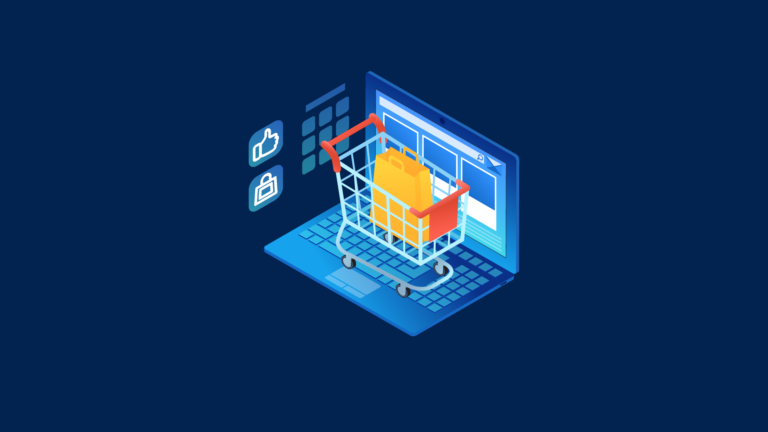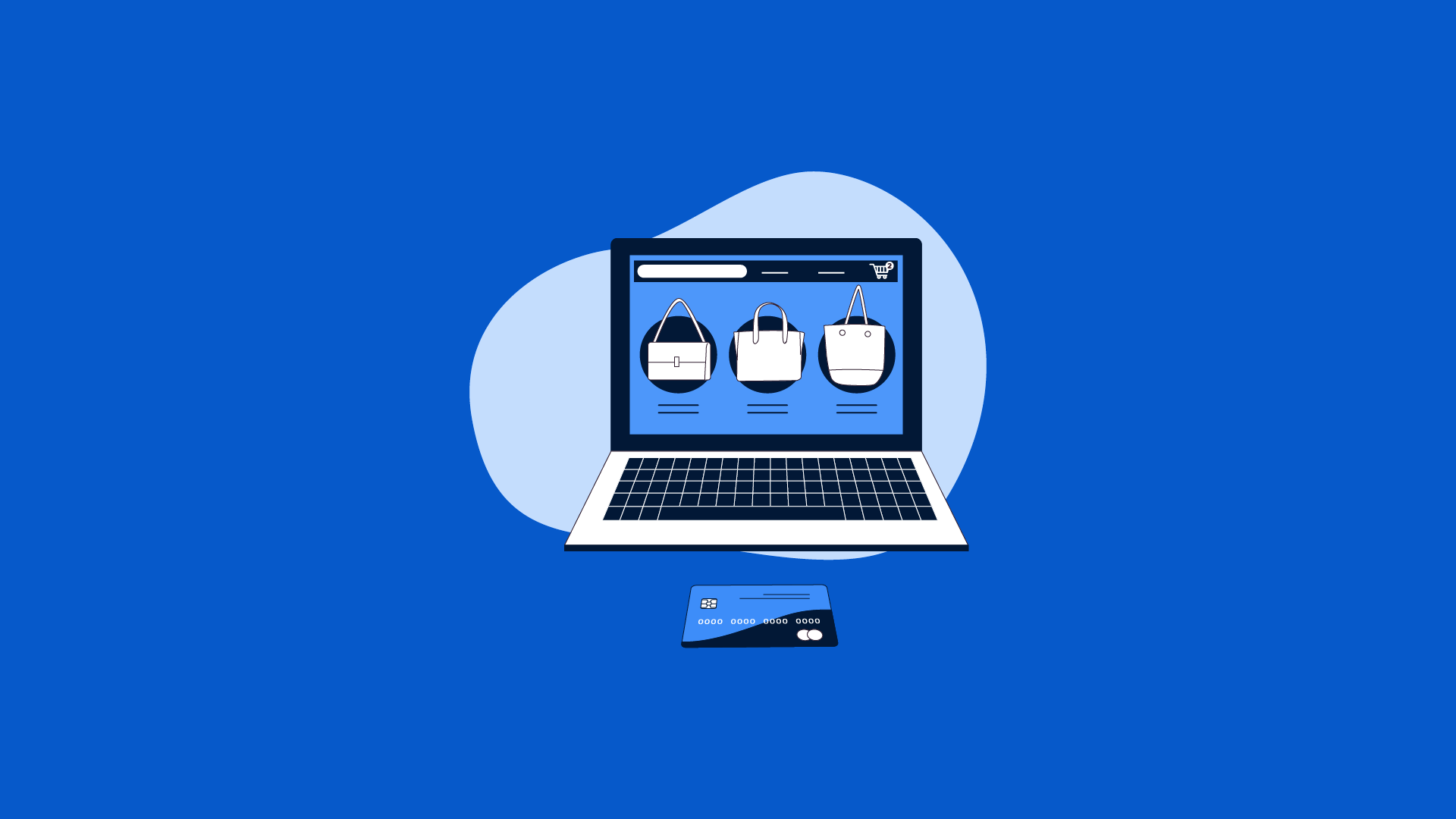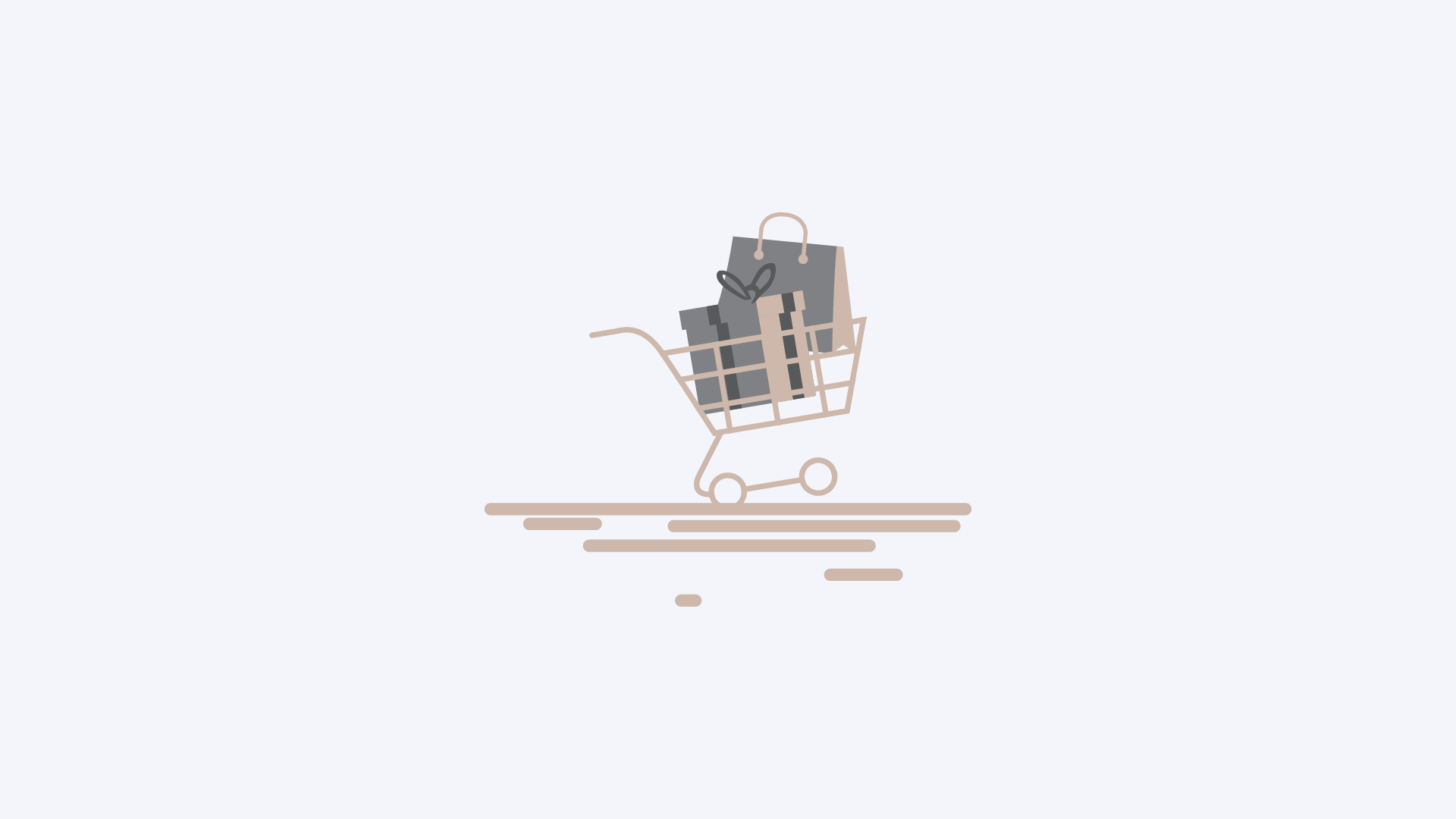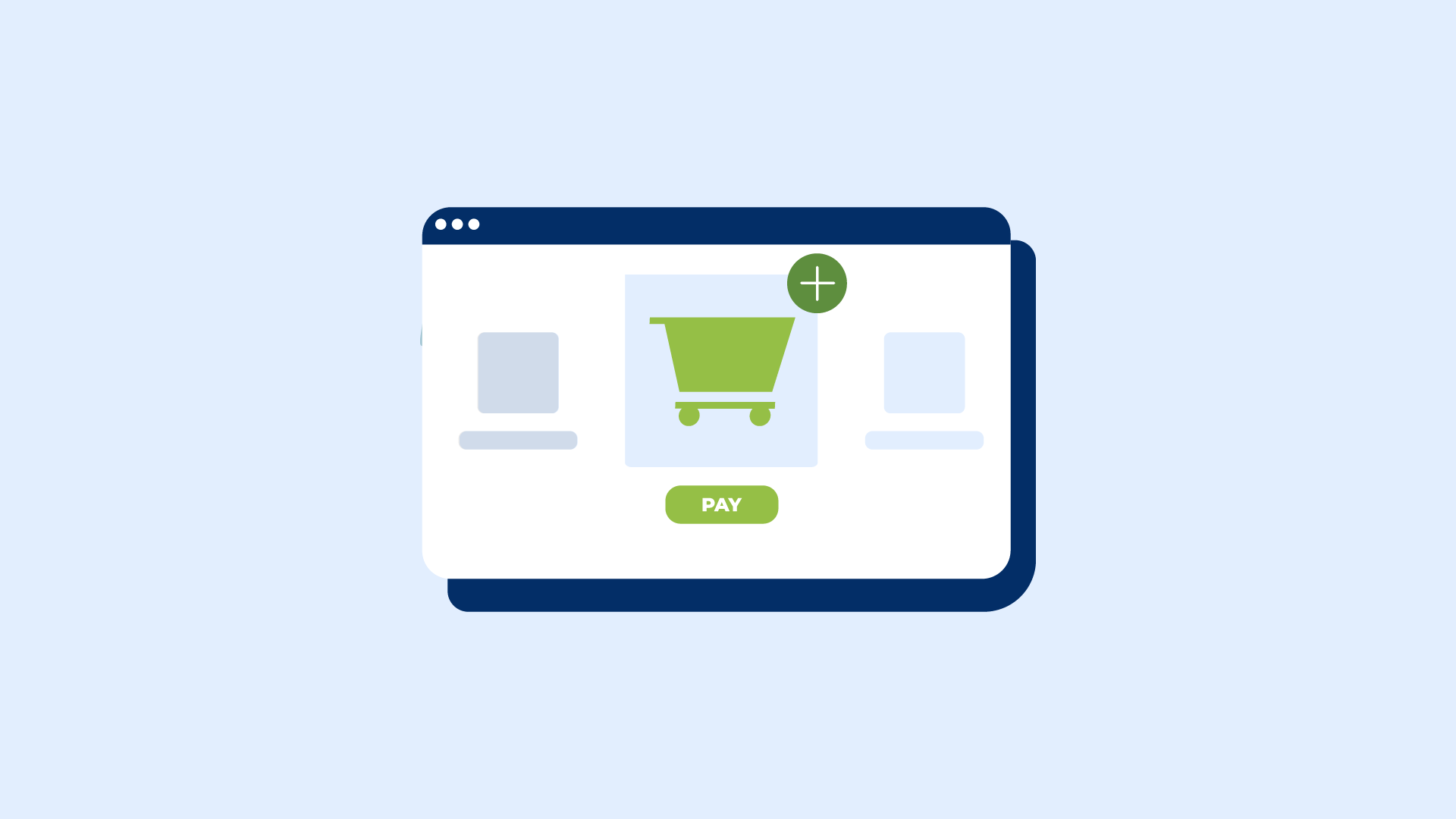An anonymous man purchased a Sting CD from a website called NetMarket in 1994. He paid $12.48 for the said CD, which included shipping and handling fees. This was the beginning of what we today refer to as the eCommerce industry.
It signaled the first instance of someone purchasing a physical product on the internet using their credit card. Of course, today we have eBay and Amazon, which were set up in 1995 and 1996, respectively.
Back then, online sales were done through what was called “electronic data interchange,” or EDI. This is an early standard for sending data across systems developed back in 1979.
In this ecommerce guide, I will take you a comprehensive insight into what ecommerce is and what’s involved in selling online and growing your business. The evolution of e-commerce has led to the development of various commerce strategies that businesses can implement to enhance brand awareness and drive sales.
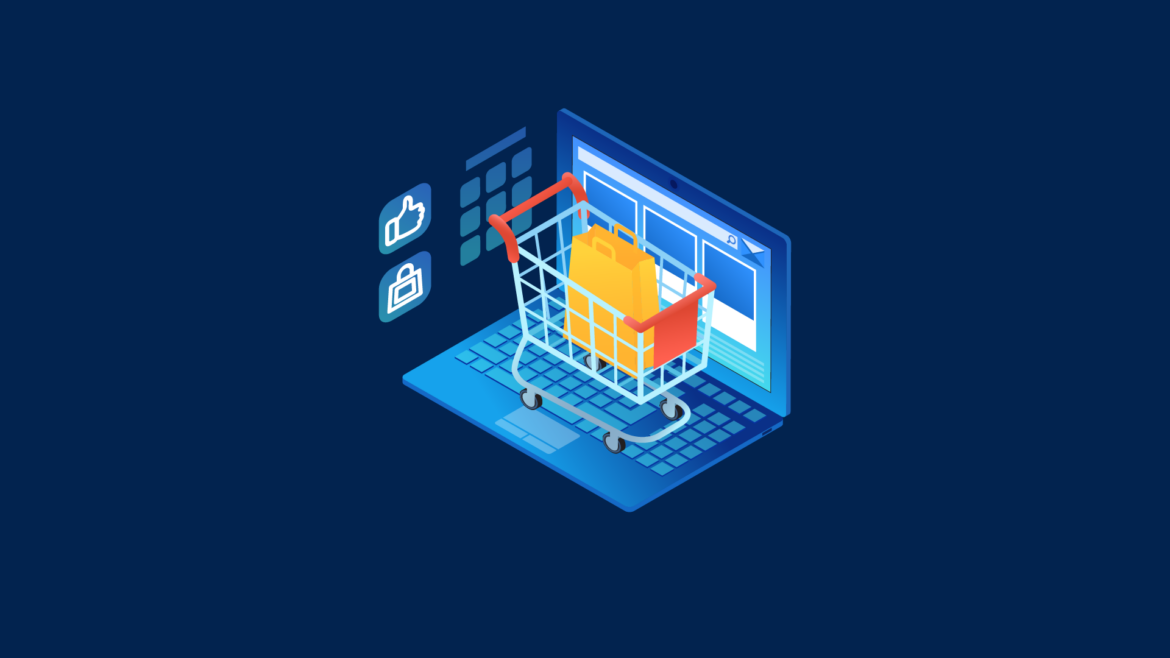
What is Ecommerce?
Ecommerce is where you buy stuff online from stores and individuals. It can be motor parts, electronics, fast food, or software. Sometimes it’s very difficult to understand how it works so here is a brief introduction.
Ecommerce works more like a physical store because the same principles apply. Customers visit your online store, then browse products they love and make a purchase.
Each ecommerce store uses a unique identifier called a “digital footprint” which is an expression of your brand’s presence online. This tells Google and other websites that a site has a certain number of unique visitors each month. The number of digital footprints each ecommerce store receives is called “organic traffic”.
On your end you can collect data from visitors to understand more about how they use your website. This way you can improve their user experience over time.
What is an eCommerce Store?
In simple words, an e-commerce store is a store that is either online or offline but sells online.
When online, stores sell only to customers who have entered their personal information. Here, customers can browse items and make purchases from a physical store.
If you want to make money online, just focus on selling the right products. The key to e-commerce success comes down to understanding your audience. Find out what kind of products they prefer, where they buy from, and how often.
E-commerce doesn’t have to mean just physical stores with physical products. It can also mean online stores with software and data available to anyone. E-commerce is where the majority of online purchases occur these days.
It makes sense why it’s thriving. It also makes sense that as more businesses turn to e-commerce to meet the growing demand. They can meet more diverse needs, regulations will need reviewing and adapted as time goes on.
Ecommerce Trends
You should keep your eyes on the following retail industry trends, as they are sure to affect e-commerce.
Global Ecommerce Growth
Retail ecommerce sales are reached $4.058 trillion in 2020. However, the global ecommerce industry will exceed $5.684 trillion dollars by 2022, according to Oberlo.
The retail ecommerce industry is growing rapidly because online sales have become much more attractive than their brick-and-mortar counterparts. The virtual marketplace offers convenience and a wider selection of products at cheaper prices. It also provides extensive tracking options and faster delivery times.
As a result, consumers are increasingly flocking to the internet in order to find the products they’re looking for.
Increased Adoption of Mobile Devices
As time goes on, we’re becoming more and more tied to our smartphones. Modern consumers have been trained to have access to information at their fingertips 24/7. The phones in our pockets can offer a quick way to get the information you need when shopping online.
This trend is only likely to continue as more and more businesses expand their mobile presence. Brands are doing this by creating apps and optimizing their websites for mobile viewers.
Increased Adoption of Voice Assistants
Voice assistants such as Google Assistant, and Cortana are becoming much more ubiquitous, with many people having one in their homes or on their phones.
These devices make it easier than ever for consumers to do research while shopping online by allowing them to ask questions without ever needing to look up a browser search bar or type out a question into a chatbot interface.
This trend increases the importance of making sure that your business is represented with clear, accurate information across all platforms where customers could be looking for you or asking about your products.
Increased use of social media for advertising purposes by retailers who want consumers’ attention will mean tighter competition in this area.
However, this also means that new opportunities may open up if companies start investing less heavily in traditional advertising channels like television commercials and focus instead on social networks like Facebook where people tend to spend more time. Social media can be particularly effective for promoting an e-commerce clothing brand, emphasizing the importance of both organic posts and paid ads.
Benefits of eCommerce
Benefits of Ecommerce to the Buyer
One of the biggest advantages is convenience
When shopping online, a buyer can search for items, check out and then receive your purchase all without leaving home. This is especially nice during the busy holiday season. Being able to shop from your couch while watching television, rather than running all over town, can save you a lot of time.
More information on products
Another advantage to ecommerce is that you get more information about a product than you would in a physical store. You have access to detailed information about features, options and sometimes even product reviews from other customers. This can help you make an informed decision before buying the product.
Easy product comparisons
Ecommerce also makes price and product comparisons easier than ever before. Many websites will allow you to look at products from several different sellers at once. This allows you to quickly compare prices and see which seller offers the best deal for the item you want to buy.
Fast delivery
When shopping online, delivery is fast and easy for most products. Most online stores will ship products or let you pick up purchases in their store locations. If you are ordering a large item that needs to be shipped by freight truck, some sites offer free shipping when your purchase meets minimum requirements. Other sites offer special deals on larger purchases like discounted pricing.
Direct contact with customer support
You’ll also find that ecommerce websites are much more likely to offer you ways to communicate directly with customer service representatives when there’s an issue with your order. Many online retailers offer live chat functionality on their websites so that you can get answers almost instantly.
Benefits of Ecommerce to your Business
Lower overhead costs
While brick and mortar businesses have been the standard for decades, there are major benefits to selling goods online. Some ecommerce sites can offer lower overhead costs due to the elimination of brick and mortar locations.
While the cost of maintaining a large physical store can be quite pricey, online stores can save on this cost by using only a website, which allows them to run their business from any location. Plus, by not having to maintain a physical location, companies can sell goods around-the-clock (versus traditional store hours), which increases their revenue potential.
Business is not limited by location
The ability to sell goods online can also reach customers beyond geographical location. For example, someone in New York might be able to sell products across the country or even internationally through ecommerce.
Instead of trying to manage one physical location, then gearing up for another at a different time zone, an online business can access customers around the world 24/7 with just one website.
Easy to track your sales
Many e-commerce businesses face challenges with data management and content creation. Most ecommerce sites handle the selling process and tracking for you, so you don’t have to worry about getting bogged down in those details – especially if there’s one portal that handles point-of-sale (POS). Even more control over personnel costs and inventory management is possible because ecommerce sites often have more automated ways of managing your business data.
An eCommerce business is scalable
As businesses continue to grow, the need for ecommerce becomes more apparent. One reason that retailers and other merchants are increasingly turning to ecommerce is due to the lower overhead costs. When compared to traditional stores, ecommerce stores have much lower overhead costs.
The reason for this is because there are no rent, utilities or other business expenses associated with ecommerce storefronts. As a result, you can sell your products at a lower cost than in a traditional store.
Availability to serve customers
Another benefit of online shopping is around-the-clock selling. Online retailers can sell their products 24 hours per day, seven days per week, 365 days per year. Once again, this makes it possible to reduce your prices and attract customers from all over the world who don’t have time during normal store hours.
Great visibility on search
In addition to the cost savings mentioned above, ecommerce can also offer greater visibility. Through search engine optimization (SEO), it’s possible to reach customers who may not have been aware of your brand before. It’s also easier to track customer information and sales by way of an online portal that handles point-of-sale (POS) transactions.
Plus, there are no physical constraints on inventory management: if a product sells out in one location, you can simply restock from a different warehouse location without needing to worry about running out of stock again.
Increase in customer loyalty
As customers are able to buy from you directly without going through third party distributors or retailers, they tend to be faithful to you and will always come back for more purchases or repeat transactions and vice versa.
They also get value for their money as they don’t have middlemen involved who usually add on costs that end up increasing prices unnecessarily which might discourage potential customers from buying from them. This makes customer loyalty inevitable.
Increase in customer engagement
Building relationships with your existing customers can help develop new ones as happy customers tend to become loyal customers who share their experiences with others both offline. This is especially possible on social media platforms where they can easily reach out not only locally but even internationally too.
You can achieve this through various ways such as offering free delivery services within specific distances or areas when they spend above a set minimum amount.
Types of Ecommerce
There are three main types of ecommerce: business-to-business (B2B), business-to-consumer (B2C), and consumer-to-consumer (C2C). E-commerce involves buying and selling both products and services online, which requires unique strategies to succeed in the competitive online marketplace.
Business to Business (B2B)
Business to Business or B2B Ecommerce is when businesses buy from other businesses. For example, a company wants to purchase new computers for their employees. It would be B2B ecommerce if the company purchased the computers from a computer manufacturer instead of an electronics retailer.
If you choose to go the B2B route, you’ll be selling your products directly to other businesses. With B2B ecommerce, you can create a web store and sell online. If your industry calls for it, meet with potential buyers in person to discuss deals and solicit orders.
Some examples of B2B e-commerce include:
A restaurant supplies wholesaler sells food and kitchen items directly to restaurants rather than consumers.
An IT company sells internet services directly to other businesses rather than individual internet users. For Example, managed hosting or cloud computing.
Business to Consumer (B2C)
Business to Consumer or B2C Ecommerce is when a business sells directly to consumers. For example, an online clothing store that sells fashionable clothes directly to the public would be considered B2C. This is because it is a business selling its products directly to consumers.
Amazon, Nike, GymShark and even Etsy are all examples of B2C companies. B2C marketing tactics can be extremely effective at encouraging consumers to make purchases. They can include anything from social media campaigns or influencer partnerships to paid advertising.
In addition to this, you can run in-store promotions or email marketing. The goal for these strategies is typically higher sales volumes for lower margins.
B2C sales strategies are often focused on increasing the average order value by driving shoppers towards impulse buys, cross-selling/upselling related products or offering discount codes or limited time sales as an incentive for shoppers to purchase now instead of later.
B2C companies can use social media platforms like Facebook and Twitter to interact with prospective buyers and existing customers alike through direct messaging, comments on posts, reviews and more.
Consumer to Consumer (C2C)
Consumer to Consumer or C2C Ecommerce involves both individuals buying and selling their items on the internet. An example of this would be if you wanted to sell your old iPhone on Craigslist, eBay, or any other site designed for people to sell their personal items directly to others who want them.
If you’ve ever visited eBay, you’re already familiar with a C2C marketplace. Founded in 1995, eBay is an online auction website that facilitates transactions between individual consumers. It has over 160 million users worldwide and sells more than 800 million items across the globe each year.
If you have something to sell, eBay allows you to list it on their site—as well as communicate with potential buyers and ship your item. They do this while also protecting both parties in case of a dispute through its feedback system and buyer protection policies.
That said, not everyone needs to be part of such a large community to utilize a C2C marketplace effectively. For example, if your small business makes custom hand-painted pet portraits, selling on Etsy. An online handmade goods site with over 7.7 million registered sellers would be a great way for you to reach your customers without having to advertise or maintain your own storefront.
How to Start an Ecommerce Business
Launching an eCommerce store is no easy feat. It takes time and effort to get your products up on the web and ready for sale. But when it’s done right, it can be a dream come true for any entrepreneur.
If you’re looking to launch an eCommerce business, here are the nine steps you should take to get started:
Choose a product to sell
Decide on a business model
Choose an ecommerce platform
Design your website
Add your products
Set up payment options
Market your business
Set up shipping for products that need shipping
Track and manage your business
1. Choose a product to sell
If you’re not sure what you want to sell, then it’s time to start researching what products are in demand. Look at how much competition there is for those products. There are tons of tools out there that will help you do this, but I recommend starting with Google Trends.
You can enter any keyword or topic into the search bar and get an idea of how popular it is on Google. For example, if you were looking to sell dog toys, then enter “dog toys” and see what comes up.
Look at the volume (how many times people searched for that keyword) and see if there’s a spike or dip over time. The more popular something is now and will be in the future, the better chance you have of making money from it.
Choose something you’re interested in and know about. If you aren’t passionate about the products that you sell, it will show through in your marketing efforts and customer service.
Choose something with a high profit margin. If you want to make money selling on Amazon, for example, consider selling items that have a high margins instead of low-margin items like clothing or electronics.
Don’t choose too many products at once. It’s tempting to think that if one brand doesn’t work out, there are dozens more where that came from. But if you try too many things at once, it will become difficult to manage them all effectively. You will end up getting overwhelmed by all the moving parts.
2. Choose a business model
Once you’ve decided on the type of product(s) you want to sell, it’s time to think about how you’ll make money from those products.
There are several different ways to make money with an eCommerce store: retailing, wholesaling, dropshipping and more.
Whichever model you choose depends on how much time and money you want to spend on inventory management as well as how much control over your customer experience you want. For example, if you want to offer returns or exchanges.
3. Choose an eCommerce platform
There are many different platforms available for creating your online store; some of them even offer free trials so that you can test them out before committing yourself financially or time-wise.
Shopify has been ranked as the best platform for beginners by several reputable sources. See our Shopify Review.
It’s easy to use and set up your online store. Gymshark, a British fitness apparel and accessories brand, manufacturer and retailer use shopify plus for their online store.
Design your e commerce website
Whether you’re building a new website from scratch or redesigning an existing one, it’s important to create a successful e-commerce website that matches your brand image and offers customers everything they need from their first visit.
From product descriptions and pricing to images and customer reviews, make sure that all information is clear and easy for customers to find what they’re looking for quickly and easily.
Don’t forget about SEO. Make sure you’ve optimized every page of your site for search engines so that customers can find what they’re looking for easily when searching online. Even better, get them there directly from search engines.
The first step is to design your website. Pick out a theme that matches the brand of your business and customize it using tools like WordPress. If you aren’t tech-savvy, consider hiring a professional designer or web developer to make sure that everything looks good and functions properly.
5. Add your products
Once your site looks great, it’s time to move on to the selling part. You’ll need to add your products or services—things like shirts, music recordings and handmade goods are popular choices. To do this, you’ll need product descriptions, photos and possibly videos.
If you don’t have any of these things already, this will be a time-consuming process but there are ways around that. You can use Amazon Marketplace, which is free and easy to use.
You can do this manually or by uploading them through an app like Shopify or BigCommerce (which both offer free 14-day trials).
Don’t just list the products you carry, explain why they’re great. You can add specifics like size charts and color options (especially if your inventory is large or variable). Also add lifestyle details that show off how awesome they are.
It’s also important to keep your descriptions honest. If someone buys something and ends up unhappy because of misleading information, they’ll tell their friends—as well as post negative reviews online. And that could hurt your reputation much worse than anything.
6. Set up payment options
It’s important to give customers all of the payment options possible so they can pay for their orders however makes sense for them. This includes giving people the option of paying with their credit cards, debit cards, as well as other forms of online payment methods such as PayPal and Google Wallet.
You’ll need to decide how people will pay for their purchases so that they can complete an order and receive their products in the mail. You can choose from various payment processors , which will help you manage payments through eCommerce platforms.
If you’re selling digital products or courses, then those transactions will likely be handled through an external processor like Payhip or Gumroad instead.
7. Market your ecommerce business
Now that you’ve launched, it’s time to start marketing. You need to know who your customer base is and what their needs are in order to market effectively to them.
It is important to know how your product can benefit them, as well as how they can benefit from using your product or service. If you do not have a specific idea of the target audience for your website, then you need to develop a buyer persona before launching your eCommerce website.
After developing a buyer persona, create a marketing plan. You should have a clear idea of where you want to go and what steps will take you there. Your plan should include things like getting the word out about your product or service, creating visibility for your business, and making sales conversions through advertising and promotion strategies.
Developing a realistic plan is key because it gives you something concrete to follow and makes it easier for you to see clear results from the time, energy, and money.
Make sure people know about your storefront—create a Facebook page, start a blog, and run a social media campaign. Remember that you don’t need to be the only source for your product. If you’re selling baked goods, other sellers could sell them too. Your goal is to let people know that you’re there and available.
8. Set up shipping for products that need shipping
Some products need shipping, while other don’t. So, make sure to set up the appropriate shipping options for your products before you begin selling. The most common shipping options include free shipping, flat-rate shipping and calculated shipping based on the order price and destination.
Ideally, you’ll want to use calculated shipping so that customers always know exactly how much they’re going to pay for shipping, no matter what their order size is. Also make sure to set up tracking information so that customers can keep tabs on their orders.
Setting up shipping for items that need shipping is key to the success of nearly any ecommerce business.
9. Track and manage your business
Keep track of what’s happening in your business. Track how many sales are coming in each day, which products are most popular, and which products are producing more sales.
Once people start buying your products on a regular basis, it’s likely that they’ll want something more than just a receipt in their mailbox when they order. To ensure they keep coming back to buy more of your inventory, offer them an easy way to track their orders online.
Some eCommerce platforms will do this automatically, but there are also plenty of third-party sites out there that will allow you to set up an account where customers can view information on their orders once they’ve been placed.
Also consider using social media as a tool for customer service. You can stay in touch with your customers on Facebook or Twitter, sending out promotions or answering questions about your products.
10. Sales Tax and Compliance
Navigating the world of sales tax and compliance is a crucial aspect of running a successful e-commerce business. As an online store owner, understanding the sales tax laws and regulations in your state and country is essential to avoid any legal pitfalls. Here are some key points to keep in mind:
Sales tax rates can vary significantly from state to state, ranging anywhere from 0% to 8.25%. This means that your e-commerce business needs to be aware of the specific rates applicable to the locations where you operate.
One of the primary factors determining your sales tax obligations is the concept of “nexus.” Nexus refers to a physical presence or significant connection to a state, which can include having a warehouse, office, or even employees in that state. If your e-commerce business has nexus in a particular state, you are required to collect sales tax from customers in that state.
Managing sales tax can be complex, but there are tools available to simplify the process. Sales tax software can automatically calculate and collect the appropriate sales tax for each transaction, ensuring that your online store remains compliant with state laws.
This software can also help you keep track of tax rates and any changes in regulations, making it easier to manage your tax obligations.
Staying up-to-date with changing sales tax laws and regulations is vital for e-commerce businesses. Laws can change frequently, and failing to comply with new regulations can result in penalties and fines. By keeping informed and using the right tools, you can ensure that your e-commerce business remains compliant and avoids any legal issues.
Ecommerce Marketing Best Practices
Set smart goals
To achieve your ecommerce goals, you must start by creating SMART goals. SMART is an acronym for specific, measurable, attainable, relevant and time-bound.
You’ll be creating a series of actions that are linked to the development of your business. Be sure to create goals that will help you meet your short term and long term objectives. For example, if you want to double your profits in the next year, you will have to plan how this can be accomplished by creating a sales forecast.
In order to achieve any goal you must define the following:
Specific: What are you trying to accomplish?
Measurable: How will you know when you’ve reached this goal?
Actionable: What steps do you need to take in order to accomplish your goal?
Realistic: Is this a reasonable expectation for your business at this time?
Time-Bound: When do you want to have your goal accomplished by?
Know your audience
Someone shopping for groceries online will have different expectations than someone shopping for high-end shoes online. Take into account factors like age, income level and location when establishing your target demographic.
Then, tailor all aspects of your website from product selection to pricing accordingly so customers feel comfortable shopping on your site and find what they’re looking for quickly while still being inspired by the variety available to them.
For example, if you own an eCommerce pet store, you could cater specifically towards dog owners or cat owners.
Build a brand for your ecommerce store
A strong brand is essential in the world of eCommerce. Customers are often buying products from companies they don’t know and haven’t interacted with personally, so their trust in your brand is one of the only things that determines whether they will buy from you or not.
According to a recent study, 68% of consumers say shared values are the main reason they have a relationship with a specific brand. Brands that have strong reputations are more likely to grow faster than other brands. You can create an effective web presence by defining your audience, building brand awareness and investing in customer service.
Reinvest your profits into your marketing
You should also take into account how you will reinvest profits into your marketing strategies. It’s important to ensure that your marketing strategy is not only effective but also cost effective.
You can do this by checking out the different pay per click (PPC) platforms available on the market. This allows ecommerce merchants to focus their budget on the most profitable keywords for their products and services.
Offer multiple payment options
Also be sure to factor in payment options when setting up your business website. Look at trends and statistics from previous years and research what payment options are popular among your audience. A good way to do this is by asking the opinion of other online sellers in forums and communities.
Focus on customer service
The more personalized you can make the experience for customers, the better off you’ll be financially because customers will keep coming back once they know how easy it is to get what they want from you versus other options out there where this might not be as true for them and where other options might actually seem easier.
Make use of Affiliate Marketing
Another way to grow sales is through affiliate marketing, which means working with affiliates to promote your product or service. If you have a great product you can start an affiliate program for your store. You can engage with affiliates in your niche to right about your product or even place ads on their websites to their large audiences.
Keep track of KPIs
It’s very important to keep track of your KPIs (key performance indicators). If you don’t know how well your business is doing, it’ll be hard to make adjustments to increase sales and conversions.
Track the important KPIs for your business with using the ecommerce platform you have chosen. This will let you know what’s working in your store, what isn’t, and where there are opportunities for improvement.
For example, Magento’s built-in goal tracking can help you identify which products are most popular and which features on your site are being used the most. Then you can use this information to inform future decisions—be it how much to spend on advertisement, or how frequently to restock inventory.
You can start by defining the following:
Customer lifetime value (CLV)
CLV is the average total revenue generated from one customer over their lifetime spent with your brand; CLV should be calculated from day one so that every action you take has CLV in mind. For example, if a customer spends $300 with you on their first purchase and $300 every two weeks after that until they stop, their CLV would be $600 + ($600 * 1/2) = $900.
Customer acquisition cost (CAC)
Customer acquisition cost (CAC) is the total expenses of acquiring a new customer. This includes all marketing costs, sales expenses, and other costs associated with getting someone to buy a product.
It’s one of the metrics used to assess how effectively an online store is able to convert visitors into paying customers. The main goal is to reduce CAC as much as possible, because that means you’re spending less money per sale, and more importantly it means you’re getting your products in front of more people.
But how do you calculate your CAC?
One way is by taking your total advertising expenses and dividing it by how many customers you acquired through those ads. This will give you an average amount that you spent per ad, including media costs, labor, etc. Then you can divide that amount by the number of customers acquired through that media source to get your CAC more precisely.
To figure out the average cost per ad, add up all the marketing costs related to the acquisition of new customers. This includes all paid ads, any labor costs related to sales, and any other marketing expenses such as SEO, social media marketing, public relations, or affiliate marketing.
Then look at your sales database and see how many customers came from each media source. For example, if you spent $10 on Google Ads and made $100, then your CAC from AdWords is $0.10.
Use email marketing
Email marketing gives you a chance to contact your customers outside of eBay. You can use it to remind them about upcoming sales, inform them about new products, and more. This is an excellent way to ensure that they’re always aware of what’s going on with your store.
Email is one of the most effective ways to market directly to customers because unlike other forms of advertising it’s personal. Send out emails about upcoming sales, new products or blog posts, or even about tips for using your products effectively.
Make sure these emails are well-written so they don’t come across as spammy. After all, customers have a choice to receive your email or stop you from sending those emails.
Make your website mobile-friendly
It’s no longer enough to just have a website that looks nice on the desktop—you need to make sure that it works well on mobile devices too. This is especially important since mobile internet usage has surpassed desktop usage in many countries. Starting in 2016, Google began penalizing websites that were not mobile-friendly.
Since then, the company has been increasing its efforts to educate businesses about what it takes to be mobile-friendly. Ecommerce best practices are evolving and moving in the direction of being mobile-friendly. Consumers want to be able to buy from their phones, which means that your ecommerce website needs to be optimized for all types of devices.
According to Google, more searches are performed on mobile devices than on computers in 10 countries. These countries include the United States, Japan and Australia. With an increasing number of consumers using smartphones and tablets to find products online, you must ensure that your ecommerce site is optimized for mobile.
Write excellent copy
Poorly written copy can ruin the user experience of your ecommerce product pages and make visitors less likely to convert. Include complete descriptions in your product descriptions and use a conversational tone that reflects your brand identity. Including details about any materials or components.
Be sure to write clear, concise copy that will stand out on a mobile device. This is especially important when considering the fact that most people use their phones to shop.
The main goal of your copy should be to explain exactly what you do as quickly and simply as possibly. If someone finds something on your website hard to understand, they will likely move on to another site. Online buyers dont have patience to call or email you to request clarify.
Make every page load quickly
Users have come to expect quick load times for all online content, especially as internet speeds continue to increase. In fact, 47% of respondents in a 2017 survey by Akamai said they won’t wait more than two seconds for a page to load before moving on to another site.
Companies are missing out on a huge chunk of their customer base if they don’t have responsive design in place. A recent study found that almost half (49.2%) of people will abandon a site if it takes more than three seconds to load.
Use videos in your product descriptions
Many customers will use the video to help them decide whether or not to purchase the item. Filming videos and uploading them to YouTube can be labor-intensive. So, if you don’t have the time or resources, you can also generate your own video thumbnails through sites like Animoto.
Animoto is cloud-based video creation service that produces video from photos, video clips, and music into video slideshows, and customized web-based presentations
How to Increase Ecommerce Sales
With so many ecommerce stores and products to choose from, you can’t just rely on people coming to your site. You need to provide value and educate them.
Here are some ways to do that:
To maximize sales, use video and other visual content. Videos and photos make it easier for customers to imagine themselves using your product, and they can give you a great way to showcase the different ways people can use your items.
Re-market to customers who have visited your store. If someone visits your store but doesn’t buy anything, send them a follow-up email or remarket to them on social media to remind them of their experience at your store.
Improve your ecommerce product descriptions. Product descriptions are the first thing shoppers go to on an ecommerce site, so it’s important you invest time into making them as effective as possible. Make sure that you describe your products in detail, include any relevant features (like color, size or material), list how it was made and provide any other information that would help shoppers envision themselves using the item.
Make your website easy to use. If your website is hard to navigate or difficult for people to find what they’re looking for, you’ll lose customers quickly. So make sure you’ve included features like filters that allow people to search through multiple options (like price or color) at once. You can also include a table of contents with links to each section of the site and a search bar so they can find what they want easily.
Examples of Shopify Ecommerce Stores
Here are some examples of Shopify ecommerce stores:
1. Partake Foods
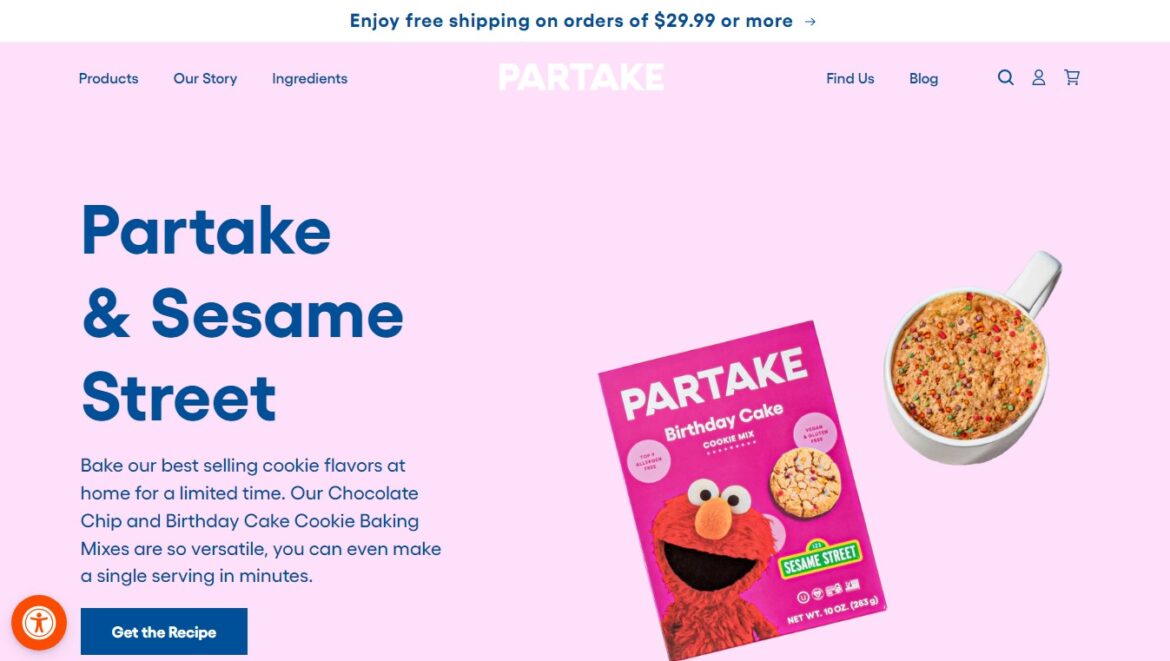
Partake Foods is an ecommerce store that sells healthy snacks. Denise Woodard started the business after she couldn’t find snacks for her daughter. They offer snacks that are allergy free. And to make them even heathier they stay away from artificial colors, preservatives and genetically modified ingredients.
2. Hiut Denim Co.

Hiut Denim Co., an ecommerce store that sells denim jeans took advantage of the skills acquired by locals from the largest jean factory in the United Kingdom. The factory was in operation until 2002.
So, the Hiut Denim Co. started in 2011 to start selling jeans from Cardigan, Wales. They work with locals dedicated to bringing manufacturing back to Cardigan.
3. Package Free

Lauren Singer is on a mission to make the world less trashy by selling beauty and household items that are zero waste. She lives a zero waste lifestyle and has dedicated her life and business to creating less wasteful consumer behaviors. Her 2015 Tedx Talk about how to have a zero waste lifestyle generated millions of views.
4. Naja
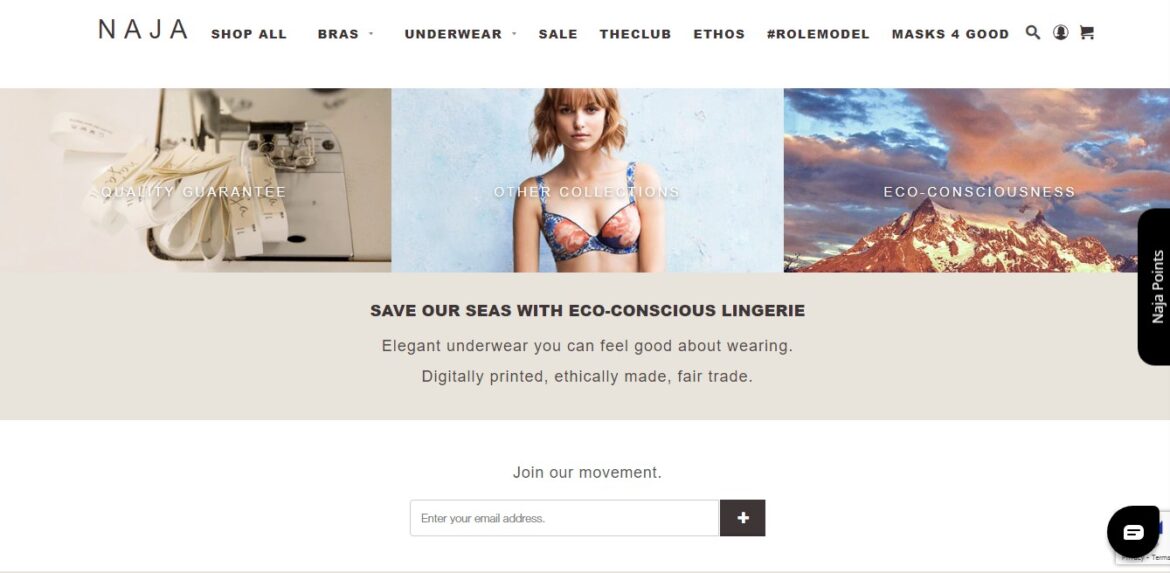
Naja was co-founded by Catalina Girald and Gina Rodriguez. Catalina hails from Argentina and Vancouver, Canada, while Gina is from Chicago, Illinois. Naja produces bras that are suitable for women of every skin tone.
The company employs single mothers and female heads of households to empower women through employment. Naja also gives 2% of its sales to support sewing programs at local foundations.
5. Meow Meow Tweet
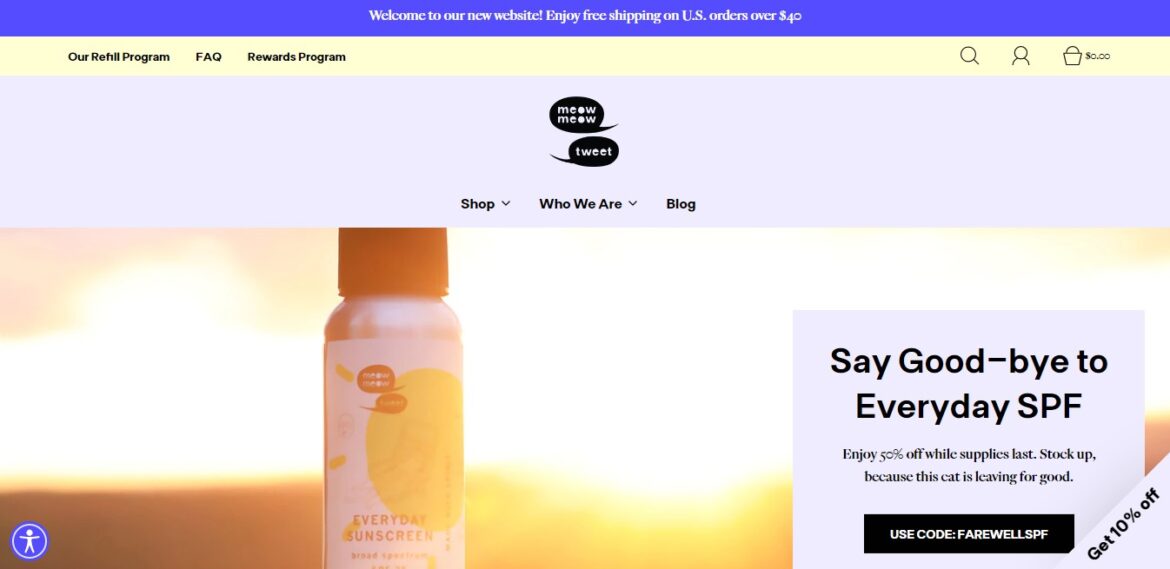
Meow Meow Tweet’s products are made by life and business partners, Tara Pelletier and Jeff Kurosaki. They have partnered together to create a line of natural skincare products with cute and whimsical illustrations drawn by Jeff.
Through this skincare line, they want to spread awareness about the environment. They also aim to reduce waste by having their customers refill their products and empty containers through a returnable bulk refill program. Customers will also be able to return unused product for the team to use again.
Ecommerce Stores with Great Design
Here are some examples of Shopify ecommerce stores with great design:
1. Stance
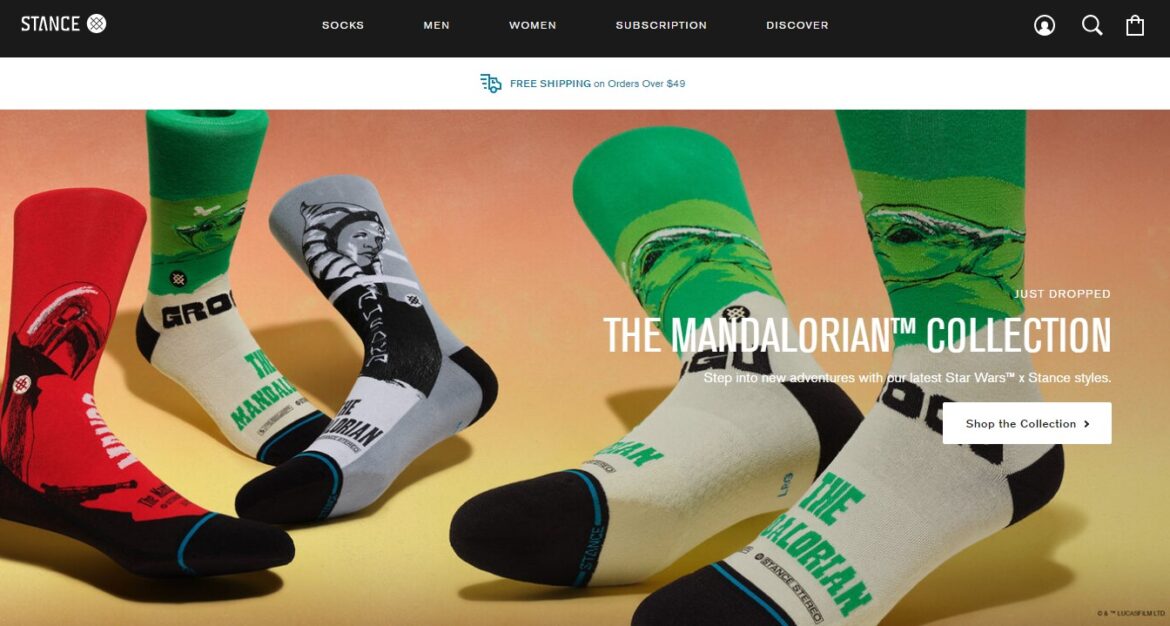
Stance, a sock brand whose products have become so popular the company could be worth $1 billion by June 2018. This is largely due to the company’s viral marketing campaigns and celebrity endorsements.
The brand also supports artist-designed socks, as well as collaborative collections with brands like Disney and Marvel. Stance socks are often sold in interesting packaging, which makes them even more special as gifts.
2. Urbana Sacs

Urbana Sacs is a business built on the principles of sustainability. Their innovative products are made with tree-free paper and can be washed just like fabric. Fabric, paper or plastic- free is our motto.
Urbana Sacs is a manufacturer of paper that makes it possible to do away with plastic. Their sacs are strong, washable, and totally recyclable.
3. Happiness Abscissa
An innovative scent shop that creates scents to evoke specific emotions. Ha focuses on a positive mood, with scents designed to excite, inspire, and motivate. They also sell bottled happiness.
Happiness Abscissa is the world’s first scent shop that specializes in using fragrance to bring out your emotions. If you’re feeling sad, frustrated, or anxious, we can help. Designed and tested by scientists, their scents help to give you an uplifting boost whenever you need it.
4. Allbirds

Sustainability and consciousness are both key at Allbirds, the Footwear Company that puts natural materials first and was started by engineer Zoey Zwillinger and football star Tim Brown.
The company is revolutionizing the shoe industry with shoes made from wool and eucalyptus thread, simple designs, and packaging made from 90% post-consumer recycled cardboard.
5. Heraldic Jewelry

Heraldic Jewelry creates pieces that are inspired by medieval times. They offer men’s and women’s crest rings, as well as pendants and cuff links. While all of Heraldic Jewelry’s work is magnificent, their customers particularly love the details etched into the pieces, such as the fine calligraphy depicting a family name and country crest.
Social Media Marketing
In today’s digital age, social media marketing has become an indispensable tool for e-commerce businesses. With billions of people using social media platforms daily, it’s an excellent way to reach potential customers and drive sales. Here are some effective social media marketing strategies to consider:
First, identify the social media platforms that are most popular with your target audience. Platforms like Facebook, Instagram, and Twitter offer unique opportunities to connect with potential customers.
By creating a presence on these platforms, you can engage with your audience and showcase your products and services.
Creating engaging content is key to capturing the attention of your audience. Use a mix of product videos, customer testimonials, and behind-the-scenes looks at your business to create a compelling narrative.
Visual content, in particular, can be highly effective in showcasing your products and encouraging potential customers to make a purchase.
Paid social media advertising is another powerful tool to increase your online store’s visibility. Platforms like Facebook and Instagram offer targeted advertising options that allow you to reach specific demographics and interests. By investing in paid advertising, you can drive more traffic to your e-commerce website and increase sales.
Monitoring your social media analytics is essential to track the effectiveness of your marketing efforts. Use analytics tools to measure engagement, track conversions, and understand which types of content resonate most with your audience. This data-driven approach will help you make informed decisions and optimize your social media strategy.
Finally, use social media as a platform for excellent customer service interactions. Respond to customer inquiries and feedback in real-time, and use social media to build relationships with your customers. By providing exceptional customer service, you can build a loyal customer base and enhance your brand recognition.
By incorporating these social media marketing strategies into your e-commerce marketing plan, you can increase your online store’s visibility, drive sales, and build a loyal customer base.
The Future of Ecommerce
The future of ecommerce is bright. Ecommerce sales are expected to grow by 8% every year. With more and more people shopping online, there will be more opportunities for those who want to sell online.
For example, Amazon has become a marketplace where third-party sellers can reach customers directly without the need to build their own ecommerce website.
In fact, there are now so many websites where you can sell your products that it can be hard to know where to start. But if you’re not sure what kind of site would work best for your business, here are some things to consider:
What kind of product do you have? If you have a physical product, you might want to sell it on an ecommerce site like eBay or Amazon.
They offer built-in marketing strategies like search ads and built-in customer reviews. If your product isn’t physical and doesn’t lend itself well to photos, then you might want to create a niche website catering specifically to your target market.
If you don’t want the hassle of maintaining a website but want some of the same benefits as having one, then you might want to consider using a platform like Shopify that already provides ecommerce
Frequently Asked Questions (FAQ)
What is eCommerce?
eCommerce, or electronic commerce, refers to the buying and selling of goods or services online. It encompasses a wide range of business models, including B2B, B2C, and C2C, and involves transactions conducted via the internet.
How do I start an eCommerce business?
To start an eCommerce business, you need to choose a product to sell, decide on a business model, select an eCommerce platform, design your website, add your products, set up payment and shipping options, and market your business effectively.
What are the benefits of having an online store?
An online store offers several benefits, including lower overhead costs, the ability to reach a global audience, 24/7 availability, easy tracking of sales and customer data, and increased customer loyalty through direct interactions.
How can I increase my eCommerce sales?
To increase eCommerce sales, focus on optimizing your website for mobile devices, improving product descriptions, utilizing social media and email marketing, offering multiple payment options, and creating engaging content like videos and customer testimonials.
What are some effective eCommerce marketing strategies?
Effective eCommerce marketing strategies include setting SMART goals, knowing your audience, building a strong brand, reinvesting profits into marketing, using affiliate marketing, and keeping track of key performance indicators (KPIs).
How do I handle sales tax for my eCommerce business?
Sales tax compliance involves understanding the specific rates applicable to your state or country, determining your nexus, and using sales tax software to calculate and collect the appropriate taxes. Staying informed about changing laws is crucial to avoiding penalties.
What role does social media play in eCommerce?
Social media is a powerful tool for reaching potential customers, building brand awareness, and driving sales. It allows businesses to engage with their audience through content, paid advertising, and excellent customer service interactions.
Why is SEO important for an eCommerce website?
SEO, or search engine optimization, is important for increasing organic traffic to your eCommerce website. By optimizing your site for search engines, you improve its visibility, making it easier for potential customers to find your products and services online.
